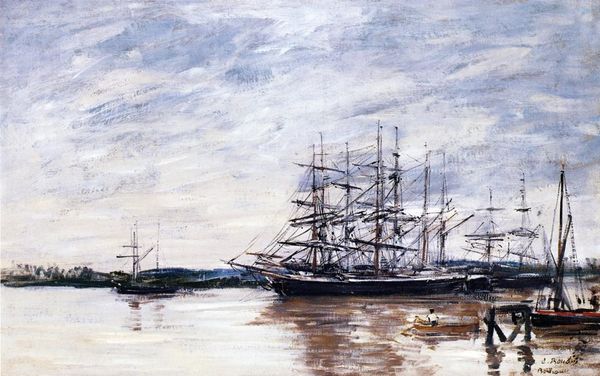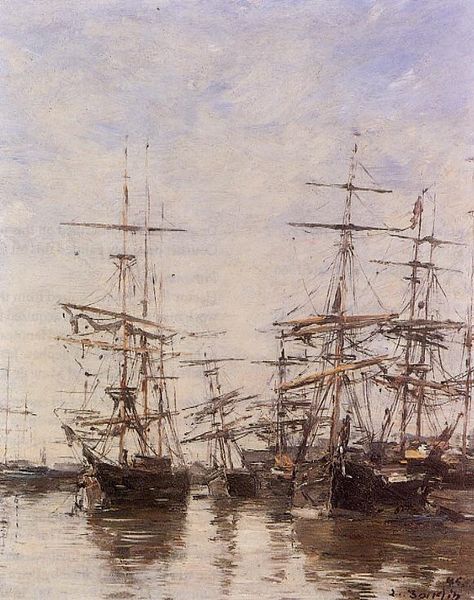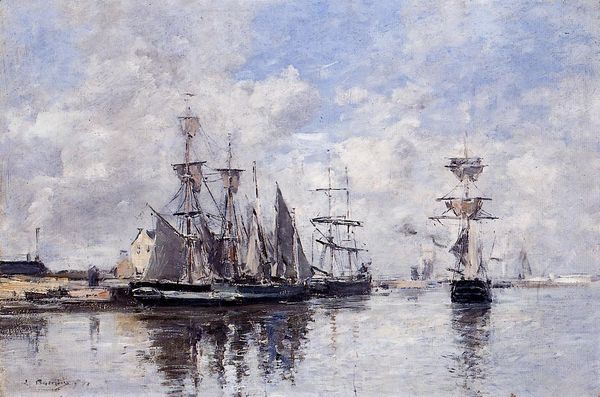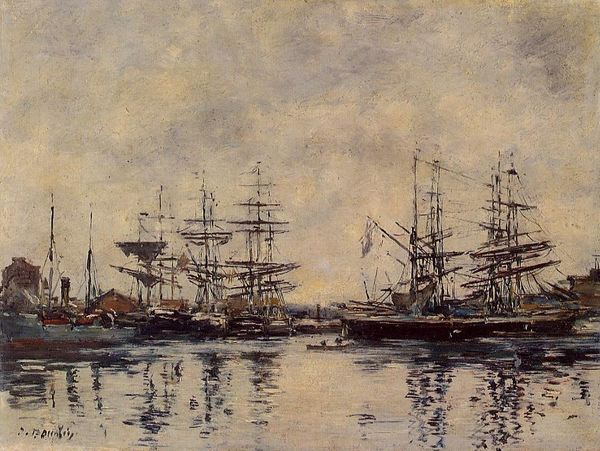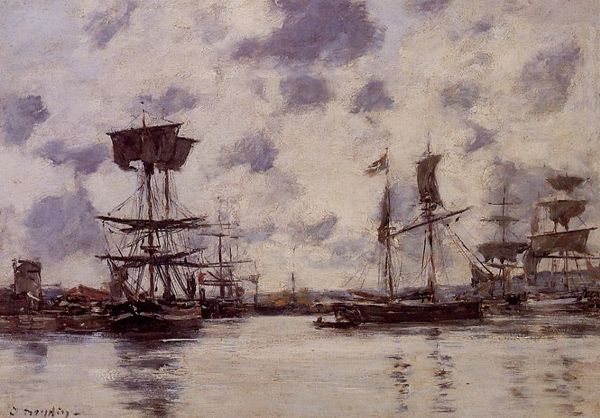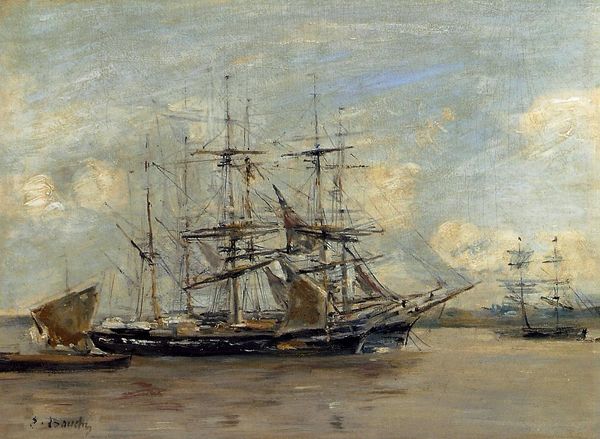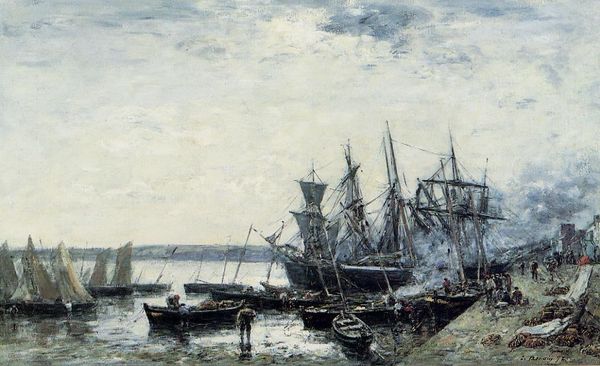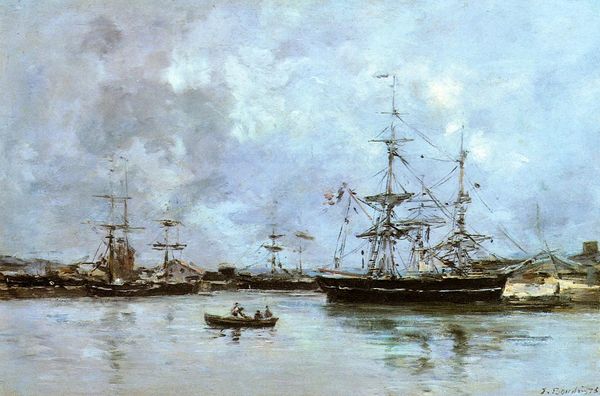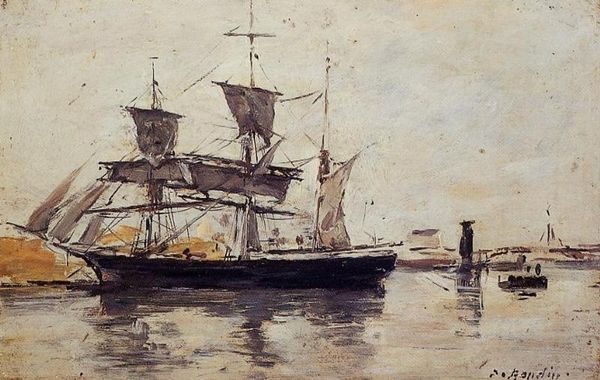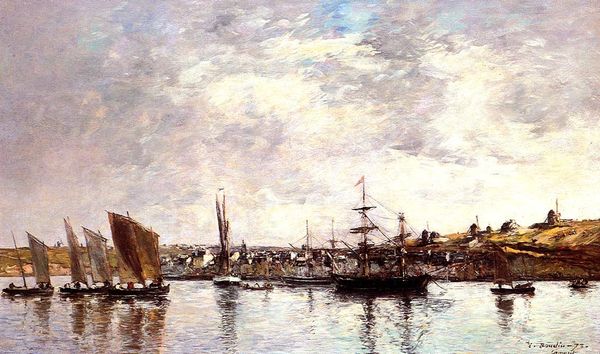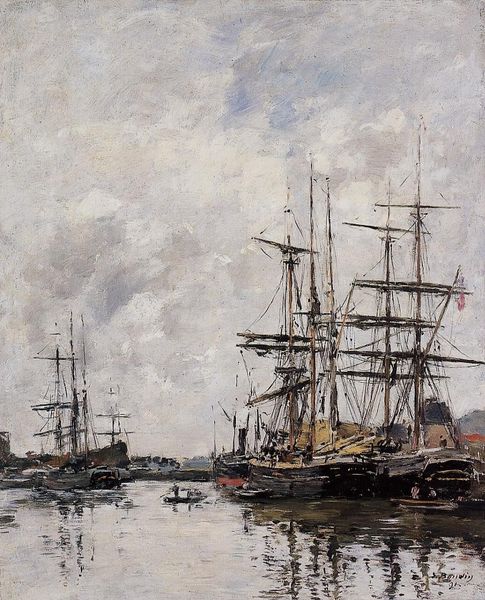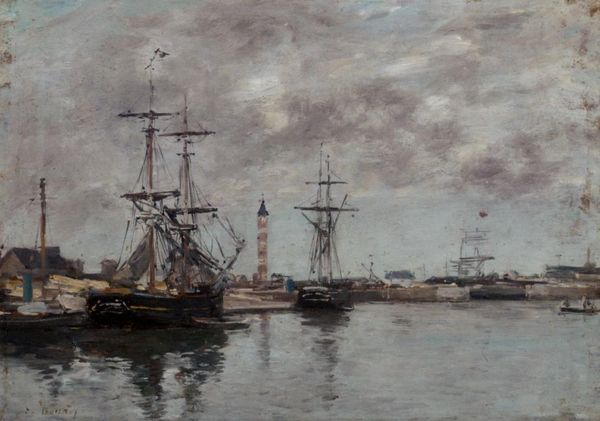
painting, oil-paint
#
boat
#
ship
#
painting
#
impressionism
#
oil-paint
#
landscape
#
impressionist landscape
#
oil painting
#
water
#
line
#
cityscape
Dimensions: 65 x 40.5 cm
Copyright: Public domain
Curator: Eugène Boudin's "Portrieux," painted in 1869, is an exquisite example of early Impressionist seascape. I’m always struck by the way Boudin captures light, how it transforms familiar scenes into shimmering studies of color and atmosphere. Editor: My first impression is of a world steeped in greys, not dismal, but profoundly still and quiet. It speaks of transitions, maybe departures and arrivals, certainly to journeys. The masts punctuate the heavy sky like melancholic symbols. Curator: It’s interesting that you key in on that sense of transition, of departures and arrivals. Considering France in 1869, on the eve of the Franco-Prussian War, those ships weren't just picturesque; they were vital arteries connecting France to the world, trade routes and potential escape routes loaded with political and social undertones. Editor: Absolutely. Beyond that sociopolitical reading, the boat has always held symbolic weight, from the Ship of Fools to Charon's boat conveying souls across the River Styx. I'm intrigued by how these vessels represent something primal, our relationship to the unknown. Look at the density of rigging depicted against such muted skies, this evokes an idea of reaching beyond the mundane. Curator: Yes, Boudin masterfully handles those spatial relationships and imbues it with this feeling of tension and of looming possibility. Although he’s known for influencing Monet, Boudin developed his own style, grounding his impressionistic impulses in an almost classical compositional structure and use of perspective. You sense the tradition even as he’s experimenting with color. Editor: Indeed, those ships with their complex networks of line create such dramatic verticality against the more blended and horizontal stretch of water and sky. To me, this hints at mankind's aspiration, and also fragility against nature's elemental forces. One senses a vulnerability inherent within the symbol of the sailing ship itself. Curator: In reflecting on "Portrieux," I realize its persistent relevance. The push and pull between stability and change, the tension between the specific and the symbolic – these anxieties are timeless, continuing to shape the narrative and purpose of society to this day. Editor: I agree; its subtle layers provide enduring contemplation and speak to human emotions as they endure across history. Thank you for the opportunity to share thoughts and impressions of it.
Comments
No comments
Be the first to comment and join the conversation on the ultimate creative platform.
